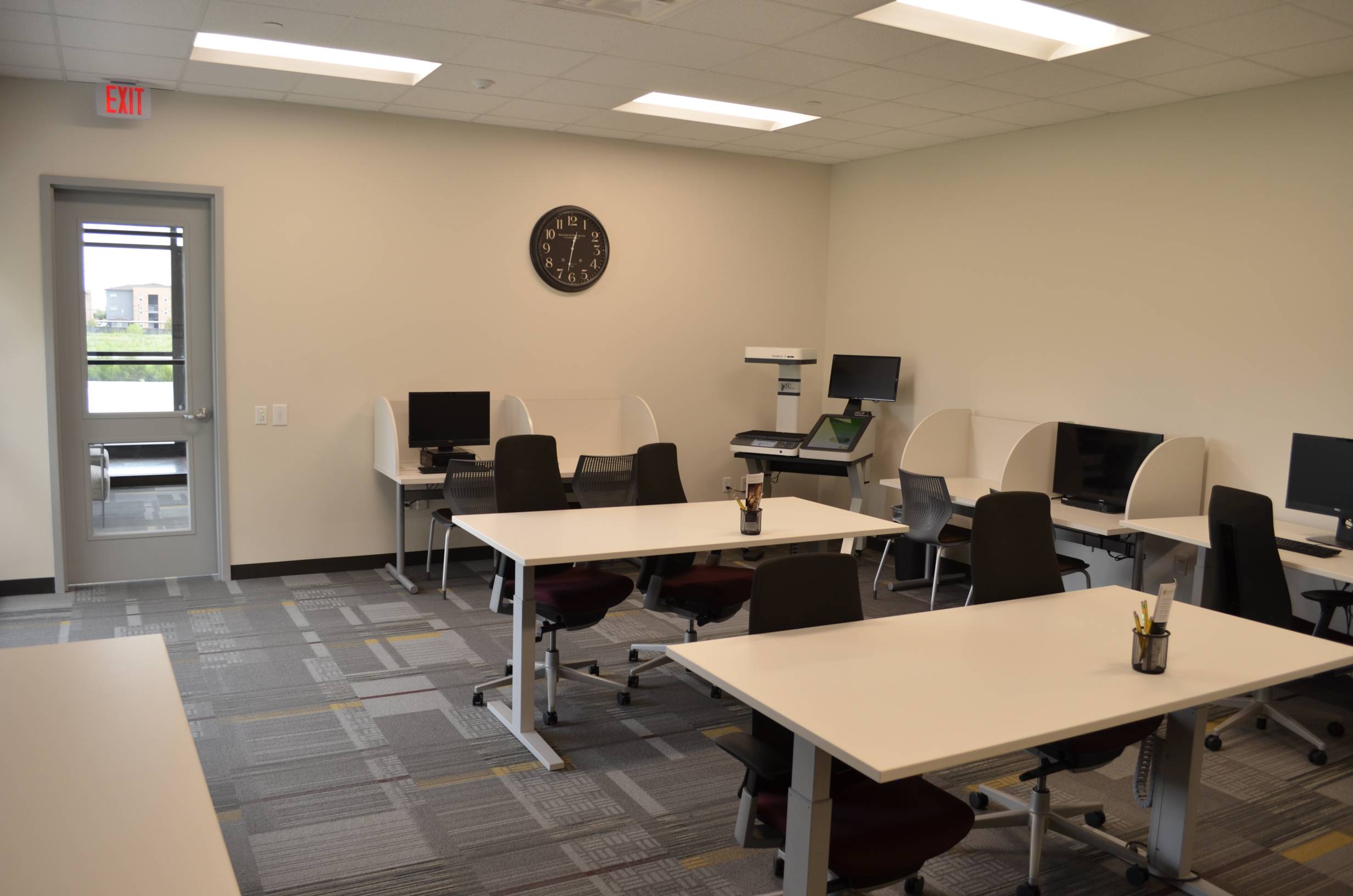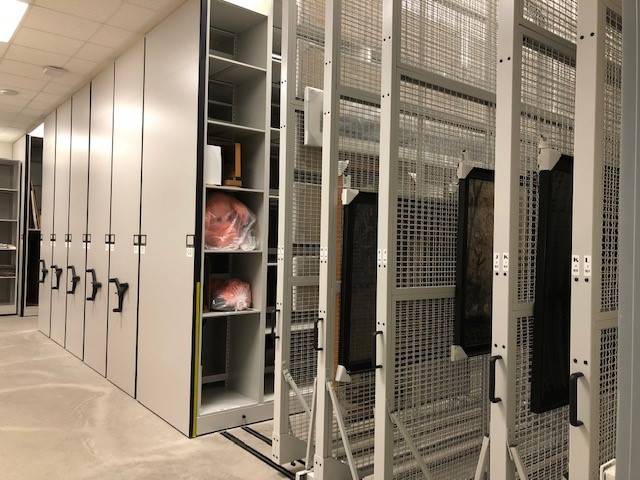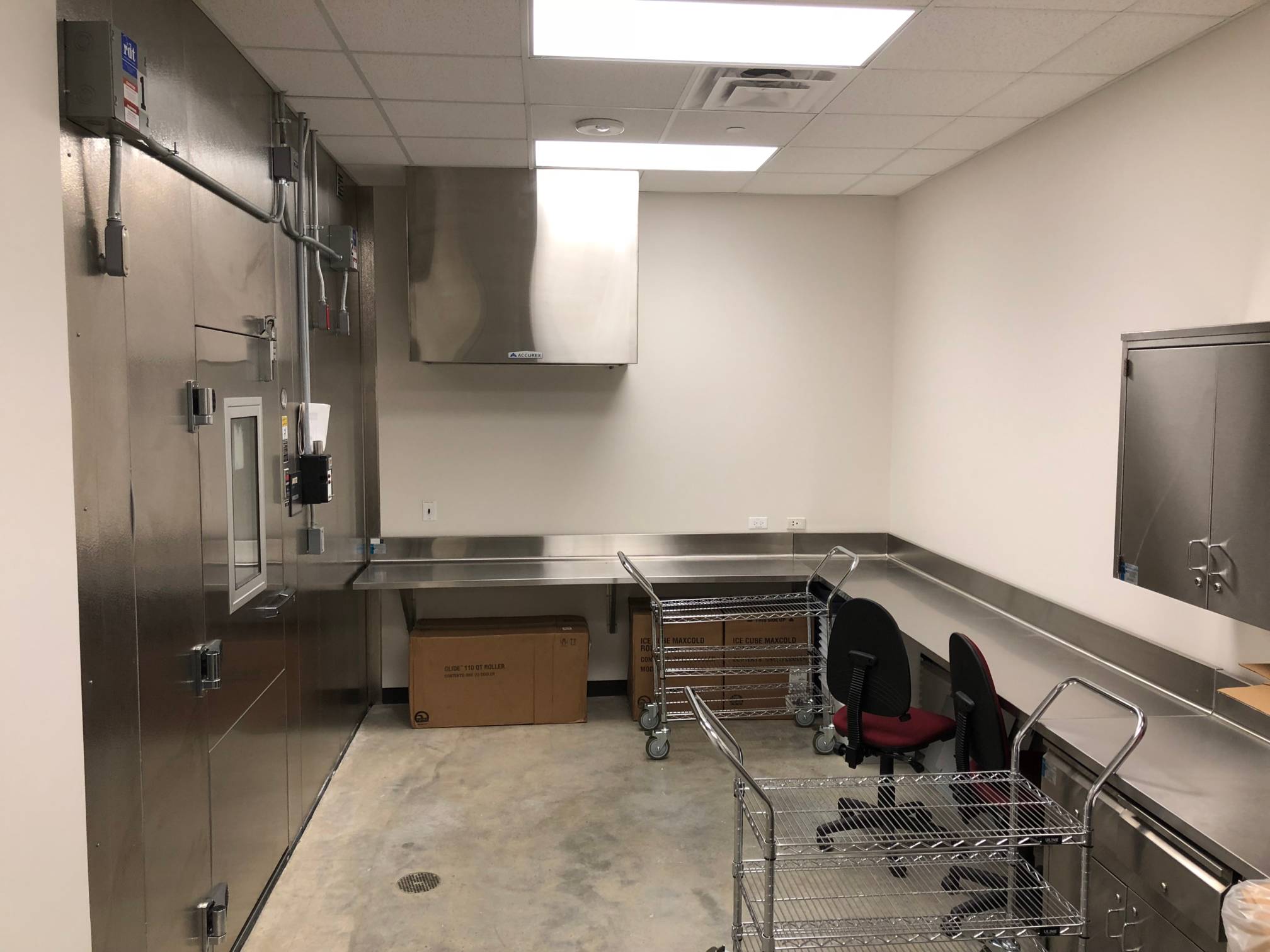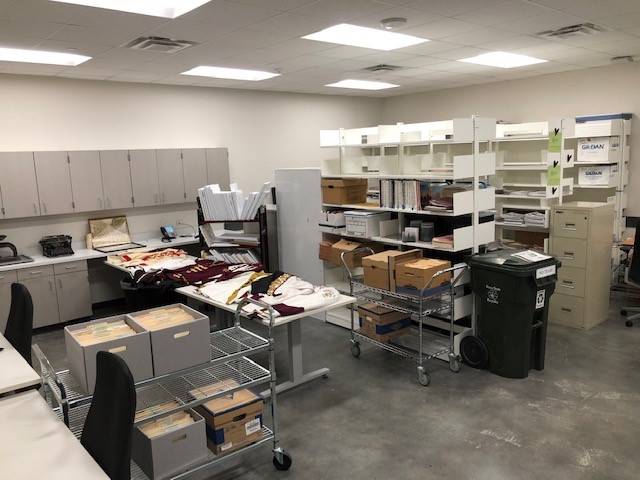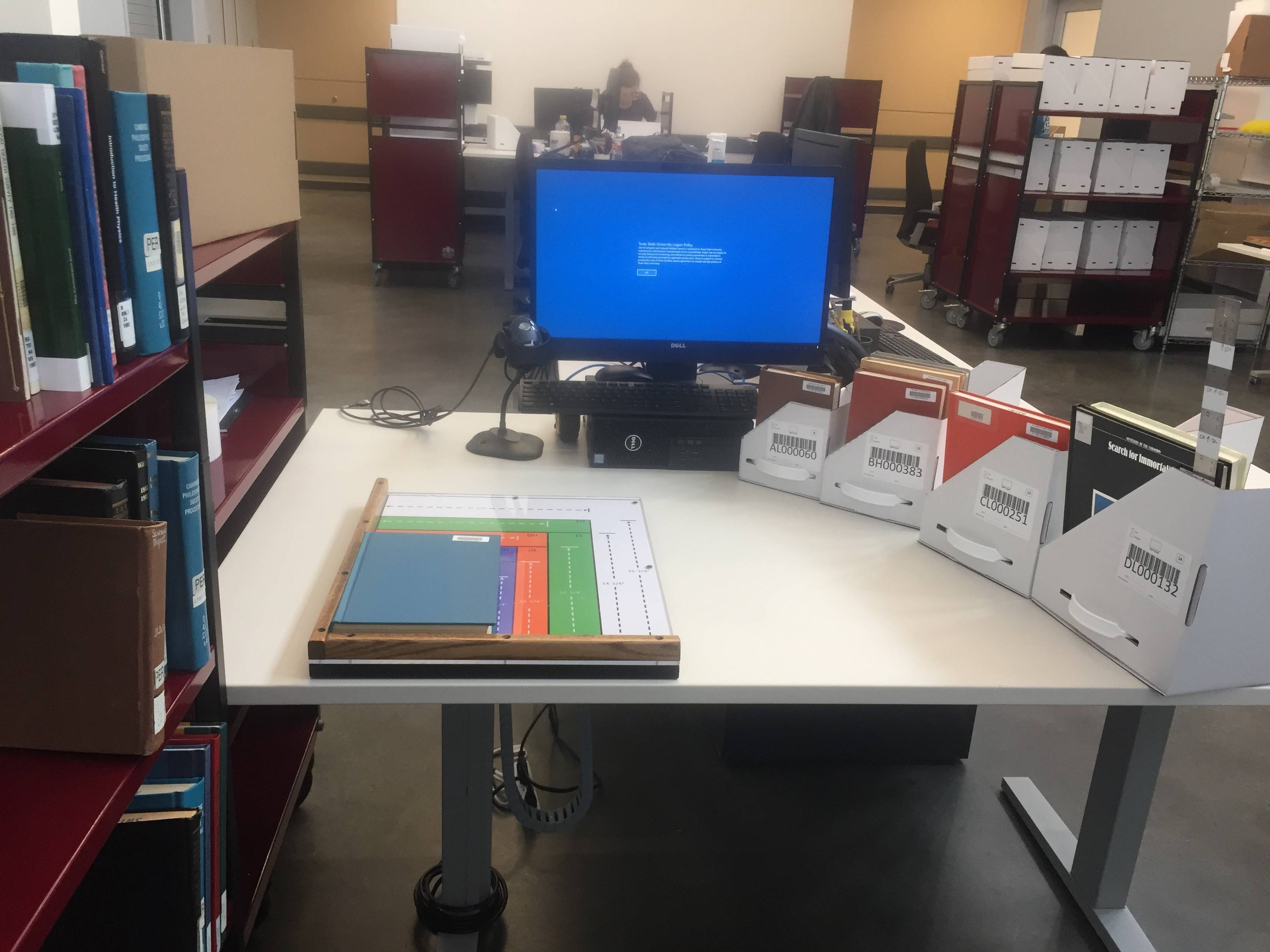Texas State University's Archives and Research Center (ARC) is a state-of-the-art preservation storage facility. This facility allows the University Libraries to safely store materials and provide access while preserving decades of university treasures and library resources, including materials from the university, University Libraries Collections, Special Collections & Archives, and The Wittliff Collections.
The building, which opened in September of 2017, was designed to support 10 years of library growth. The ARC’s climate-controlled environment features cold temperatures and low humidity that will prolong the life university assets. This keeps them available for exploration and discovery while supporting the growth of University Libraries and Texas State. The ARC is a closed-stacks facility that is open to the public and includes a reading room to allow students, faculty, staff, researchers, and community members to review and interact with materials on site.
Initially more than 600,000 non-circulating or low-circulation library items, as well as 3,000 linear feet of archival materials from the Special Collections & Archives and The Wittliff Collections, were identified to be processed and moved to the ARC. By accomplishing this move of materials, the University Libraries were able to re-purpose valuable space for The Wittliff Gallery expansion, Alkek One and multiple student collaboration areas.

